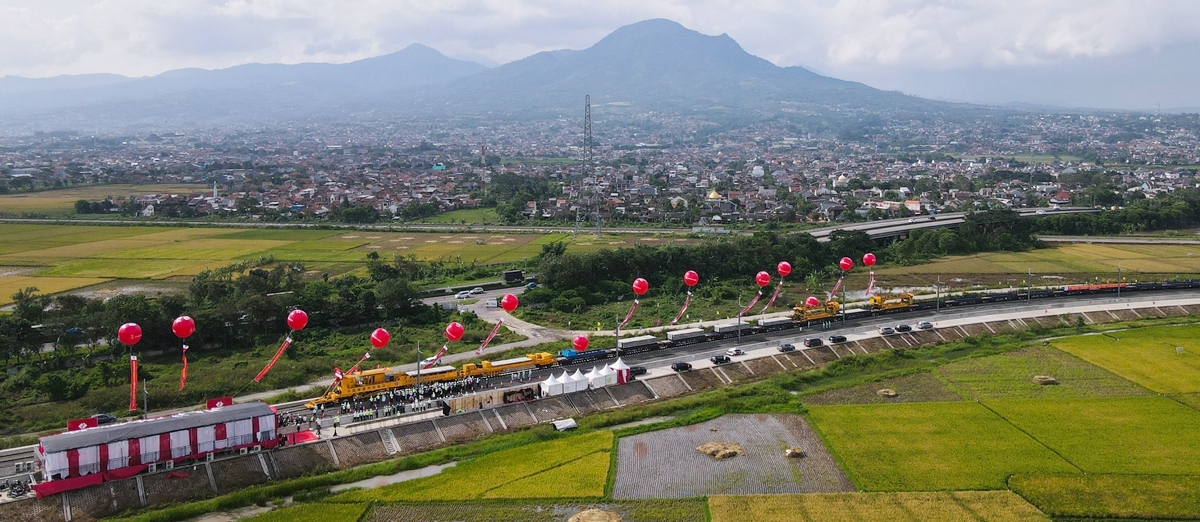Development of Productive Forces in Indonesia
 Track-laying construction site on Jakarta-Bandung High Speed Rail line in Bandung, Indonesia, April 2022.
Track-laying construction site on Jakarta-Bandung High Speed Rail line in Bandung, Indonesia, April 2022.
Indonesia has a population of 275 million and plentiful natural resources. The economy is now in the throes of dramatic transformation from rural small scale production to mainly urban industrial mass production of goods and services for sale in the national and international markets. The economy has become the largest in southeast Asia and the seventh largest in the world in terms of Gross Domestic Product. For much of the 21st century, Indonesia has had the second fastest growing economy, behind only China. The focus of its international trade has become predominantly with fellow southeast Asian countries and China and Japan.
The urban population is approaching 60 per cent of the total. Fifteen cities have populations of well over 1 million people. The Indonesian education system is the fourth largest in the world with more than 50 million students, 3 million teachers, and 300,000 schools. Primary to high school level is compulsory. Primary and middle school is free, while in high school, small fees are required. Pre-primary education from age two is also widely available under the direct supervision and coverage of the Directorate of Early Age Education Development with around 70 per cent of children attending. Indonesia has 2,595 universities and thousands of vocational colleges with millions of students and graduates.
Given the enormous growth in both the material and human productive forces, Indonesians are looking for a place in the world without the direct dictate of U.S. imperialism and its multitude of mechanisms of control such as U.S. dollar hegemony, which invariably suck wealth from the country. In this regard, Bank Indonesia, the country's central bank, and other financial and trading institutions are employing new forms to reduce subservience of the Indonesian economy to the U.S. dollar.
According to reports from Tempo.co, Indonesia's central bank is speaking out against the use of the U.S. dollar in Indonesia's export-import transactions and actively encouraging its trading partners to participate in new forms that exclude the dollar. The bank is leading a transition to local currencies in international payments and settlements to reduce dependence on the dollar and its onerous fees and control such as U.S. imposed sanctions and boycotts.
At the present time, most of Indonesia's international trade transactions are conducted in foreign currencies, predominantly the dollar. Nugroho Joko Prastowo from Bank Indonesia says, "Ninety per cent of export-import settlements are in U.S. dollars, when in fact the value of Indonesia's direct exports to the U.S. is only 10 per cent (of the total), and the value of U.S. imports is only five per cent."
Prastowo was speaking at the opening session of a forum called "Utilizing Local Currency Settlement (LCS) to Increase the Export-Import Efficiency of the Greater Solo Region." He said transactions in foreign currencies incur conversion costs, and when they are in U.S. dollars, "the conversion fee is doubled." He said a system of bilateral payments in local currency currently underway with some countries if extended to most trading partners could solve the problem.
This article was published in

Volume 52 Number 8 - November 2022
Article Link:
https://cpcml.ca/Tmlm2022/Articles/MS520818.HTM
Website: www.cpcml.ca Email: editor@cpcml.ca

